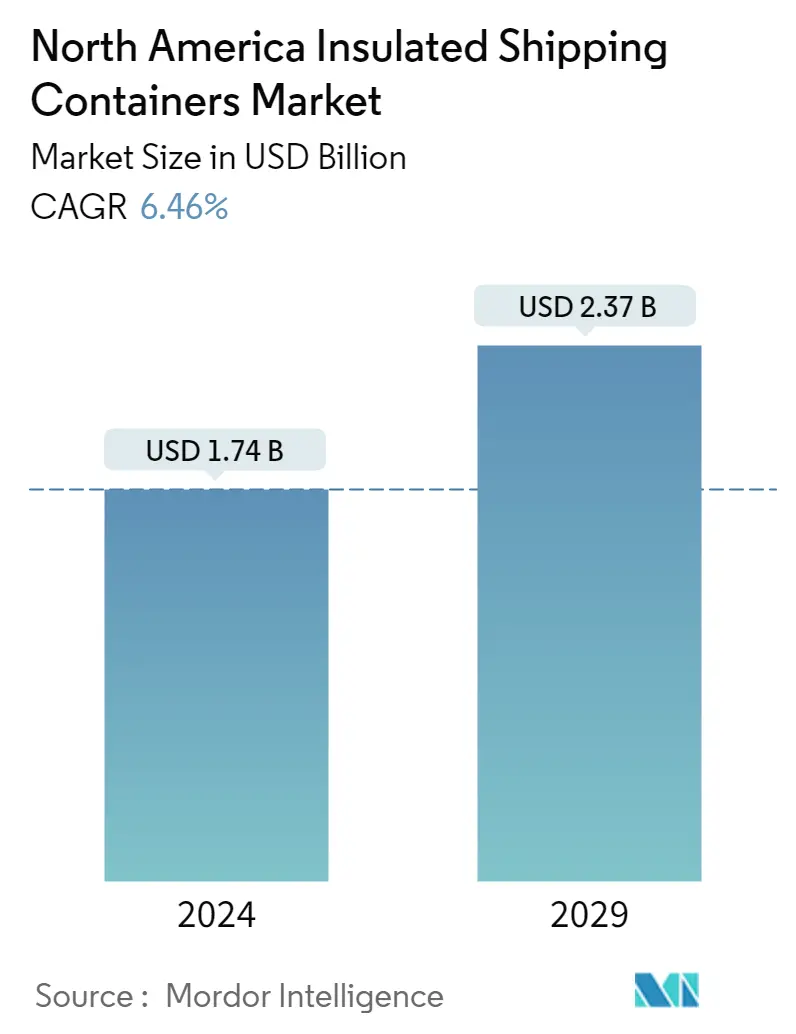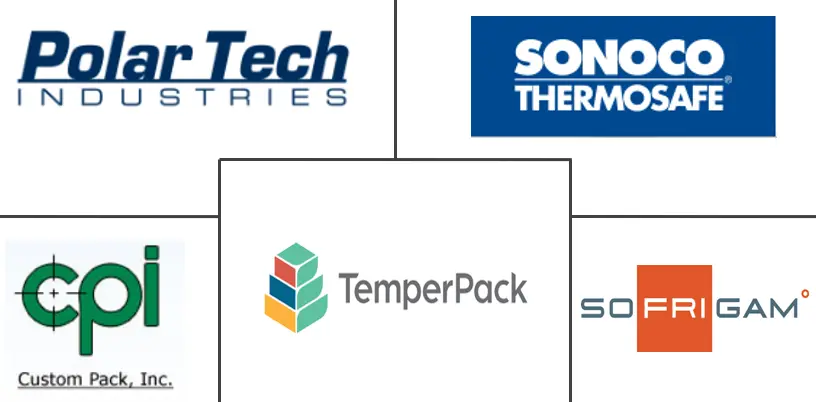Market Size of North America Insulated Shipping Containers Industry

| Study Period | 2019 - 2029 |
| Base Year For Estimation | 2023 |
| Market Size (2024) | USD 1.74 Billion |
| Market Size (2029) | USD 2.37 Billion |
| CAGR (2024 - 2029) | 6.46 % |
| Market Concentration | High |
Major Players
*Disclaimer: Major Players sorted in no particular order |
Need a report that reflects how COVID-19 has impacted this market and its growth?
North America Insulated Shipping Containers Market Analysis
The North America Insulated Shipping Containers Market size is estimated at USD 1.74 billion in 2024, and is expected to reach USD 2.37 billion by 2029, growing at a CAGR of 6.46% during the forecast period (2024-2029).
Storage containers are frequently protected against extreme temperature swings by insulating transport containers. Many different kinds of fruits and vegetables are grown utilizing organic methods all around the world. These packing materials are, therefore, widely employed to keep fruit fresh during transportation.
- To protect from infection, Chemicals, medicines, fresh vegetables, beverages, and frozen goods require precise temperature control, as the air entering and leaving the containers must be filtered. In this situation, insulation plays a significant role. By completely closing off a shipping container from the outside, it aids in maintaining the condition of the conveyed products.
- Since they are made to lower the risk of moisture considerably, thermal packing insulated shipping container liner kits are the most economical way to protect products in storage. Perishable commodities that mandatorily be transported at a steady temperature, such as food, beverages, and medicines, can also be preserved using liners.
- Expanded polystyrene (EPS) containers are among the most frequently used insulated transportation containers in the food and pharmaceutical industries. EPS coolers provide several benefits, including thermally insulating, lightweight, and affordable. Due to their negative environmental effects and lack of biodegradability, polystyrene foam products are prohibited in over 100 counties, which include Los Angeles, Portland, New York, and Washington, DC.
- The environment in which medicine is located significantly impacts how quickly it changes temperature. When left unprotected and exposed to heat or cold, a vaccination can leave the necessary temperature range within a short period. Because of these variances, the usage of insulated shipping containers is fueling market expansion.
- The market saw a sizable number of food products chilled in warehouses. For instance, the US Department of Agriculture reports that as of December 31, 2021, there were over 2.3 billion pounds of frozen vegetable cold held in warehouses in the US, followed by dairy goods (1,6 billion pounds) and frozen potatoes (1.0 billion pounds), among other things. The demand for insulated shipping containers is anticipated to rise due to this demand for frozen goods.
- With the outbreak of COVID-19, High-quality cold transport containers have become important in the transportation of pharmaceuticals, guaranteeing that pharmaceutical companies can overcome the many shipping obstacles and container makers are abiding by stringent regulatory standards for the benefit of the general population. The Food and Drug Administration and other regulatory authorities have strict rules governing pharmaceutical substances, goods, and the containers used to carry them.
